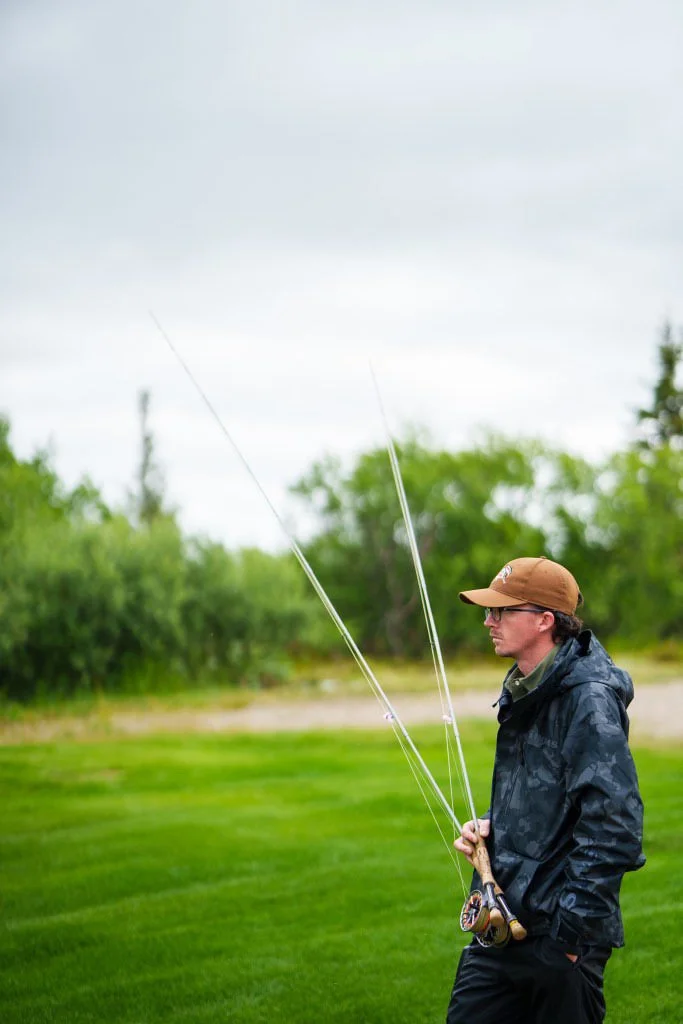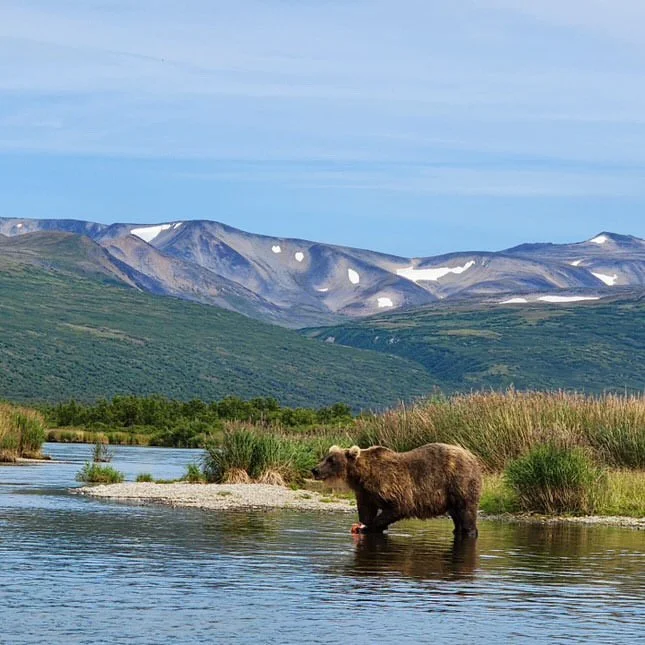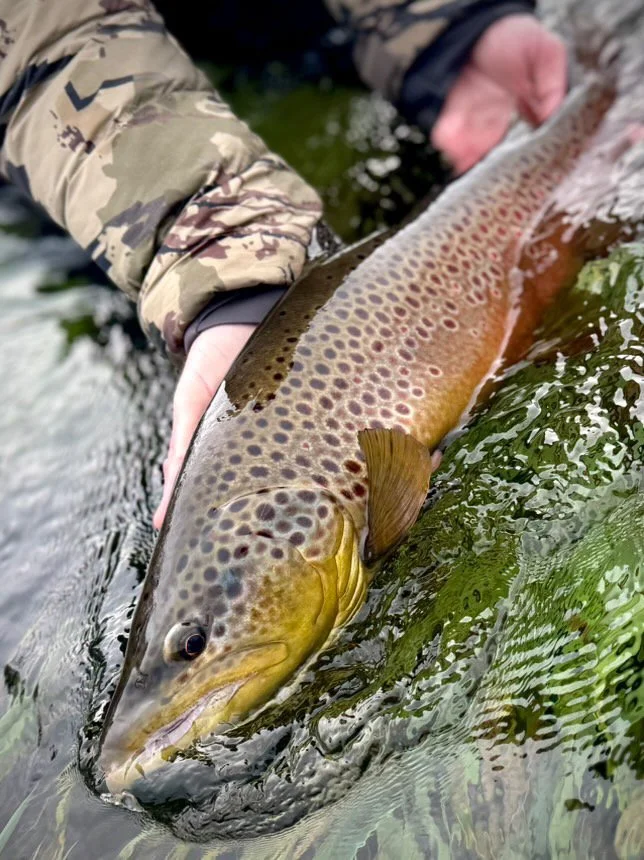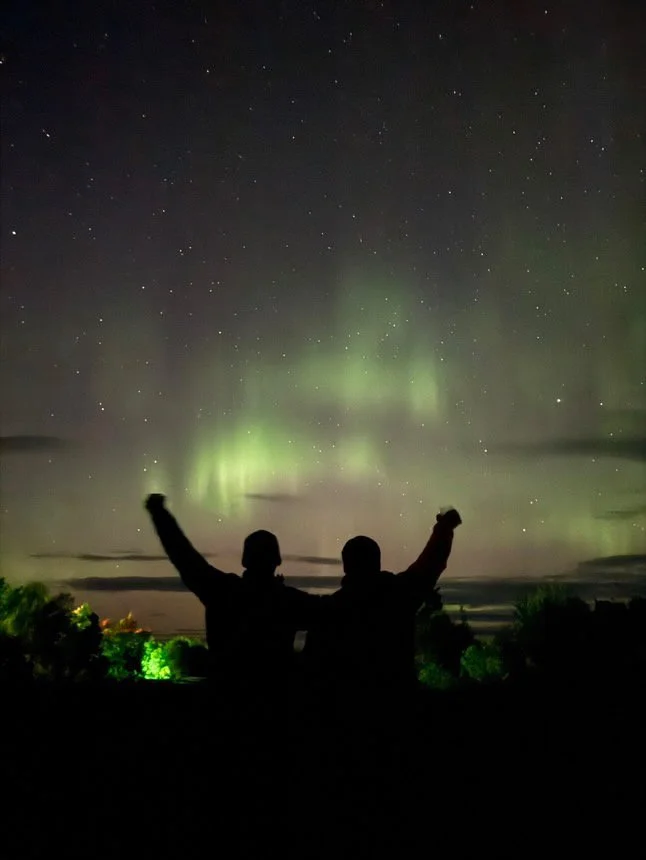GUIDE TALK: Zach Northern Talks River, Trout, and Travel
With: flyingappalachia
We caught up with Zach Northern (@flyingappalachia), a seasoned fly fishing guide who’s chased trout from Virginia to Alaska. In this interview, Zach opens up about his start in fly fishing, what it’s like to guide in such diverse locations, and shares some advice for beginners looking to step up their game. From tailwaters in Tennessee to brown bears in Alaska, Zach’s stories are as wild as the waters he fishes
Zach, how did you first get into fly fishing? Was there a moment or person that really hooked you on the sport? -
I pretty much grew up conventional fishing for smallmouth on the Clinch River in SWVA. Around the age of 16 I picked up a fly rod to target smallmouth and eventually get into the trout game. I do specifically remember going out with a few friends to a well-known C&R fishery, and not catching a trout until the last few minutes of light. Getting out and trying something different, with not very good results, motivated me to get better and dwell into the different aspects of fly fishing.
You guide in such a diverse range of locations—Alaska, Virginia, East Tennessee, and North Georgia. How do these areas differ in terms of trout fishing, and do you have a favorite spot?
This is a really good question. All of these locations are incredibly different with some similarities. The smaller freestone streams in VA and North Ga are probably the most similar. Typically these streams have more elevation and gradient change, creating more pools and pocket water. I usually approach these streams with a variety of euro style presentations. Single and double nymphs, dry dropper, a micro streamers are all productive at times. East Tennessee offers some of the best brown trout fishing in the US. With two world class tailwater fisheries, the South Holston and Watauga, there’s plenty of opportunities to find that trophy brown trout.
Being a tailwater, these rivers fluctuate in flow drastically. Keeping up with the change in flows, and how the fish behave in certain CFS is critical. Low water or no generation releases, I typically fish longer 16-18 ft leaders with really small natural baetis and midge patterns, size 18-22. Matching the hatch is crucial. I often refer to these fish as PhD fish.. meaning.. everything has to be right in the nymph your fishing and the presentation associated with that specific nymph. The same can be done on higher flows. The key on higher flows is getting down in the faster water, so fish heavy. Streamers are always an option here as well. With large predatory browns, you never known what you might pull off the bank or out from under that sunken tree. Alaska.. The Last Frontier.
I spent the summer of 2024 guiding at Alaska Rainbow Lodge in Bristol Bay. Trout in Alaska are much different than what we have in the southeast. Most of them are lake rainbows that follow the salmon as they spawn. They behave much differently and move, a lot. With only a few months to feed, these rainbows are much more aggressive and not so picky. When fishing pressure increases, they will become more selective and tougher to fool. Fishing a variety of streamers and flesh flies works well early in the summer. A black/white and olive dolly llama was my go to. Once the salmon being to spawn, it’s pretty much bead or egg fishing until the end of the season. As far a favorite goes.. it’s so hard to choose with so many awesome places to fish. The South Holston is probably my favorite. It’s a scenic float with some amazing fishing, and it’s a challenge.. I’ve never been the one who liked things that come easy.
What inspired you to become a fly fishing guide? Was there a specific trip or experience that made you think, "This is what I want to do"?
In November of 2020 I was on the South Holston. This was around the time I was really started figuring the river out and fishing 3-4 days a week. I had hooked into a giant brown and was pretty much helpless. My now good friend and guide friend, Shane Griffith, seen what was happening and come help me land it and get some pics of an incredible moment and fish. He went out of his way to do that, when he didn’t have to.
That was a personal best brown for me that I still have not beaten. I can confidently say that’s when I realized that I wanted to start guiding. I wanted other people to experience that feeling, and have the memory of a lifetime.
With such a varied guiding schedule, what’s the biggest challenge of working across so many different regions? Any travel hacks you’ve picked up along the way?
It’s a bit of a challenge for sure. I try to guide seasonally in these different areas so I’m not traveling back and forth. The north ga season is closed in the summer, which is when I would be guiding in AK. I spend a lot of my fall in East Tn and SWVA and the winter months in North Ga. Spring I’m back in East TN.
It sounds like a lot, but most travel I have to do is under 4 hrs, so it’s not terrible. While it’s never perfect, I’m still having to travel here and there for larger group trips and euro nymphing clinics. While it can be demanding and driving does get old sometimes, I wouldn’t trade it for anything.
Guiding often comes with some wild stories. Do you have a particularly memorable or funny moment from guiding that stands out?
I have too many to count! We’ve all had some wild stories on the water. Some of my days in Alaska were some of the most memorable. Having an encounter with a 700lb brown bear within 30 ft is pretty nerve rattling. The most memorable tho was our last day of the season.
After our last guests of the year are headed home, all of the staff at the lodge get together and have a dinner inside the lodge. Something that doesn’t happen until the end. It’s a grind throughout the year, and ending the season with everyone together, enjoying the camaraderie and reminiscing on on the stories of the summer is something I’ll never forget.
Many people are just starting their trout fishing journeys. What’s the number one mistake you see beginners make, and how can they improve?
My number one piece of advice, is hire a guide, even more than once if needed. This will ensure you’re learning the proper techniques. I’ve seen too many self taught folks over the years have bad habits that can’t be broken. Breaking muscle memory is incredibly difficult, so learn it right the first time.
What’s next for you and @flyingappalachia? Are there new waters you’d love to guide on or personal goals you’re working towards? -
As far as guiding on new waters. I’m pretty well set right now. With 5 different rivers, as is, obligating time to learn a new waterway amongst a varying schedule would be difficult. I’m going to keep working on my guide service. Building a client base in East TN and SWVA is at the top of my list currently. Being the best guide possible, and providing an amazing experience on the water will always be my number one goal year in and year out. I hope to see you there!









